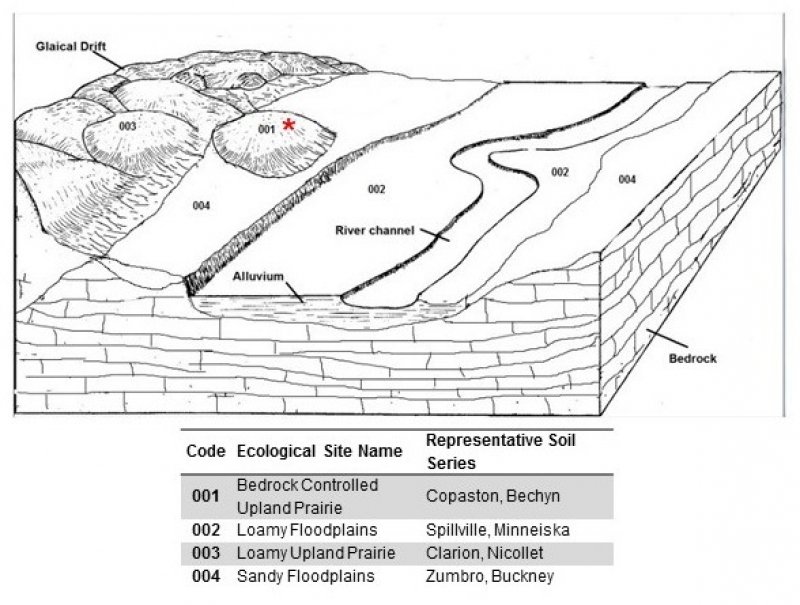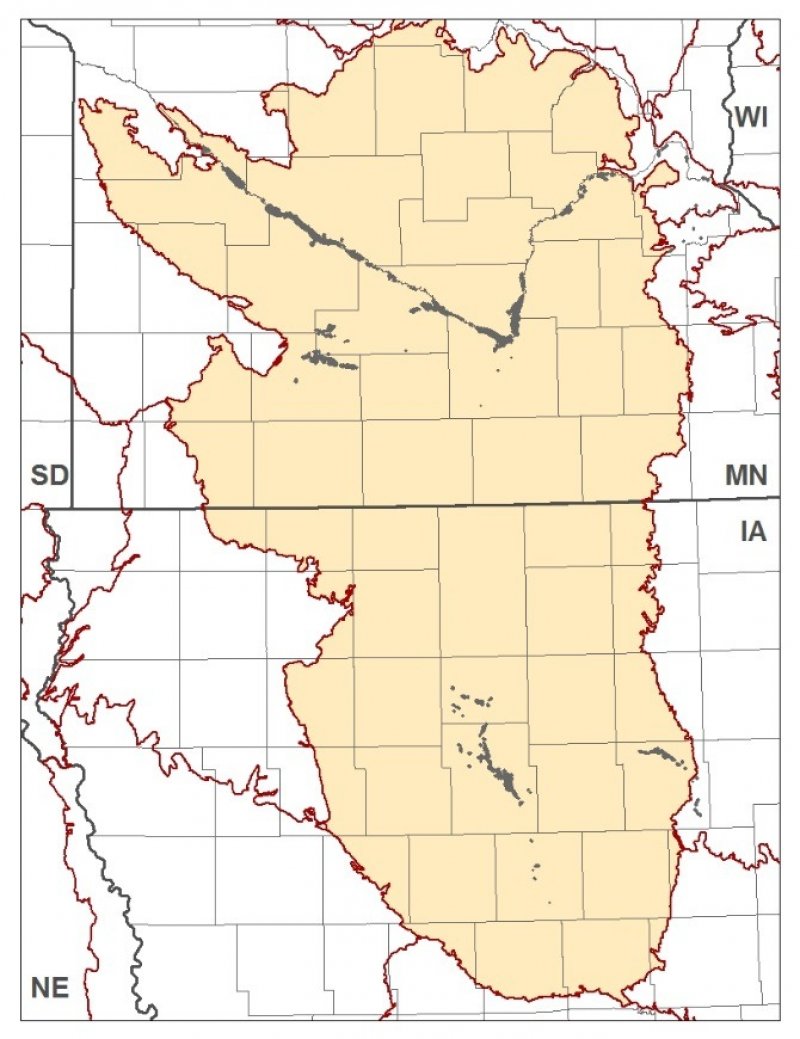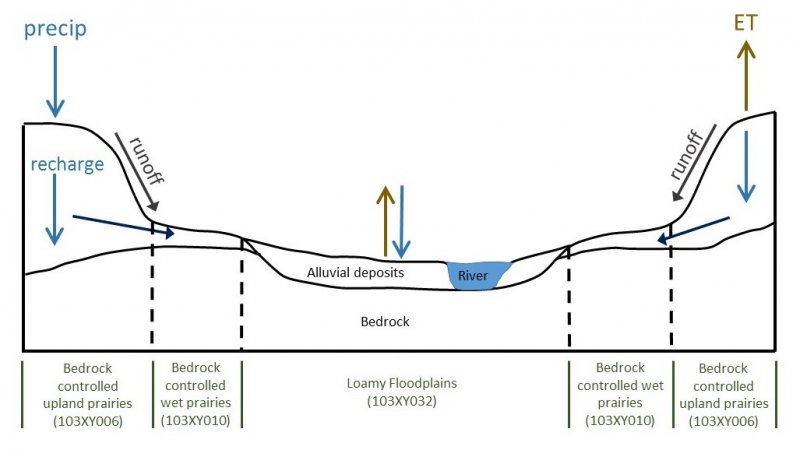
Natural Resources
Conservation Service
Ecological site R103XY006MN
Bedrock Controlled Upland Prairies
Last updated: 10/04/2023
Accessed: 12/20/2025
General information
Provisional. A provisional ecological site description has undergone quality control and quality assurance review. It contains a working state and transition model and enough information to identify the ecological site.
MLRA notes
Major Land Resource Area (MLRA): 103X–Central Iowa and Minnesota Till Prairies
MLRA 103 is in Minnesota (56 percent) and Iowa (44 percent) and consists of approximately 18 million acres. It is in the Western Lake Section of the Central Lowland Province of the Interior Plains in an area known as the "Des Moines Lobe" of the Wisconsin-age ice sheet. The MLRA is mostly on a young, nearly level to gently rolling, glaciated till plain that has moraines and glacial lake plains in some areas. The plain is covered with glacial till, outwash, and glacial lake deposits. Recent alluvium consisting of clay, silt, sand, and gravel fill the bottoms of most of the major river valleys. Paleozoic bedrock sediments, primarily shale and limestone, underlie the glacial deposits in most of the area.
The annual precipitation increases from northwest to southeast. Most of the rainfall occurs as high-intensity, convective thunderstorms during the summer. Two-thirds or more of the precipitation falls during the freeze-free period. Snowfall is common in winter. Ground water supplies are adequate for the domestic, livestock, municipal, and industrial needs. Nearly all of this area is farmland, and about four-fifths is cropland.
Classification relationships
Major Land Resource Area (MLRA): Central Iowa and Minnesota Till Prairies (103) (USDA Handbook 296, 2006)
USFS Subregions: North Central Glaciated Plains Section (251B); Upper Minnesota River-Des Moines Lobe (251BA) and Southern Des Moines Lobe (251Be) Subsections (Cleland et al. 2007)
The reference state shares similarities to Minnesota Department of Natural Resources UPs13 Southern Dry Prairie
International Vegetation Classification Hierarchy
Class: 2. Shrub & Herb Vegetation
Subclass: 2.B. Temperate & Boreal Grassland & Shrubland
Formation: 2.B.2. Temperate Grassland & Shrubland
Division: 2.B.2.Nb. Central North American Grassland & Shrubland
Macrogroup: M054. Central Lowlands Tallgrass Prairie
Central Tallgrass Prairie NatureServe Element Code: CES205.683
Ecological site concept
The Bedrock Controlled Upland Prairies ecological site is characterized by very shallow (<10"), shallow (10-20"), or moderately deep (20-40") soils that are influenced by bedrock and have a low available water capacity (1-7"). This site typically occurs within larger river valleys that have been scoured to the bedrock by glacial meltwaters, such as the Minnesota and Des Moines Rivers. Soils are mostly Mollisols that developed under prairie vegetation. These soils have a dark (black) mollic epipedon that is above the subsurface horizons and/or bedrock.
Associated sites
| F103XY032MN |
Loamy Floodplains The Loamy Floodplains ecological site is located on medium textured alluvium throughout MRLA 103. Soils textures include loam, silt loam, sandy loam and fine sandy loam. Some areas within this ecological site will exhibit long-term flooding (7-30 days). |
|---|---|
| F103XY031MN |
Sandy Floodplains The Sandy Floodplains ecological site is located on sandy-textured Mollisol soils in floodplains and drainageways throughout MLRA 103. Soils drainage class ranges from moderately well drained to excessively drained. Brief flooding may occur on areas within this ecological site. |
| R103XY010MN |
Bedrock Controlled Wet Prairies The Bedrock Controlled Wet Prairies ecological is characterized by poorly drained soils whose parent materials are loamy slope alluvium or alluvial/glaciofluvial deposits overlying carbonaceous bedrock. This site is associated with river valleys. Soils range in depth from 10 |
Table 1. Dominant plant species
| Tree |
Not specified |
|---|---|
| Shrub |
(1) Amorpha canescens |
| Herbaceous |
(1) Schizachyrium scoparium |
Click on box and path labels to scroll to the respective text.
Ecosystem states
| T1A | - | Transition to agriculture; tillage; seeding; continued management |
|---|
State 1 submodel, plant communities
| 1.1A | - | Fire return interval 3-5 years. |
|---|---|---|
| 1.2A | - | Fire return interval less than 3 years |
State 2 submodel, plant communities
| 2.1.A | - | Grass seeding; grassland management |
|---|---|---|
| 2.2.A | - | Tillage; crop production |


